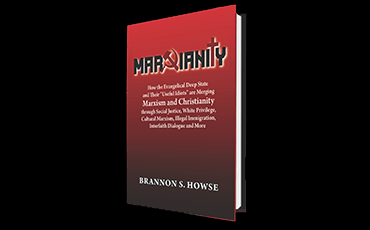True Meaning of the First Amendment
U.S. Supreme Court Justice Joseph Story explained succinctly the actual meaning of the First Amendment: “The whole power over the subject of religion is left exclusively to the State governments to be acted upon according to their own sense of justice and the State constitutions.” (Footnote 39)
The intent of the Founders was never to restrict religion. They were clearly concerned about the government’s potential to interfere with religious freedoms, as can be seen in how they wrestled with the wording of the First Amendment. The original draft was introduced in the Senate on September 3, 1789, and stated, “Congress shall not make any law establishing any religious denomination.” The second version stated, “Congress shall make no law establishing any particular denomination.” The third version went a little further: “Congress shall make no law establishing any particular denomination in preference to another.” The final version was even more sweeping: “Congress shall make no law establishing religion or prohibiting the free exercise thereof.”
By still another measure the Founders demonstrated their support for religious belief by requiring any territory applying for statehood to show respect for the “Northwest Ordinance.” Article 3 of the ordinance declares, “Religion, morality, and knowledge, being necessary to good government and the happiness of mankind, schools and the means of education shall forever be encouraged.”
The Founders as individuals were committed to the Bible and Christianity, and for that reason as well, it stands to reason that the First Amendment was not intended to separate the Christian religion from the federal or state governments.
Protecting Religious Convictions
Joseph Story, who served on the U.S. Supreme Court (1811–45), believed the First Amendment was not written to suppress Christianity but to keep Christian denominations from vying for preference as the national religion. The Founders also did not want anyone—even if their beliefs were contrary to Christianity—to be persecuted for their convictions:
The real object of the First Amendment was not to countenance, much less to advance, Mohamedism, or Judaism, or infidelity, by prostrating Christianity; but to exclude all rivalry among Christian sects, and to prevent any national ecclesiastical establishment, which should give to a hierarchy the exclusive patronage of the national government. It thus cut off the means of religious persecution (the vice and pest of former ages), and of the subversion of the rights of conscience in matters of religion which had been trampled upon almost from the days of the Apostles to the present age. . . . Probably at the time of the adoption of the Constitution, and of the first amendment to it . . . the general, if not the universal, sentiment in America was that Christianity ought to receive encouragement from the State, so far as was not incompatible with the previous rights of conscience and the freedom of religious worship. An attempt to level all religions and to make it a matter of state policy to hold all in utter indifference would have created universal disapprobation, if not universal indignation. (Footnote #40)
Again, it is obvious that to “separate church from state” was never the intent of the First Amendment. While the Founders clearly were not secularists, the meaning of the amendment has been corrupted by modern leaders who are and who want to re-create our foundation.
The Tenth Amendment
The Tenth Amendment allows that the “powers not delegated to the United States by the Constitution, nor prohibited by it to the States, are reserved to the States respectively, or to the people.” Unfortunately, this amendment, too, has fallen victim to those who want to secularize our world. Take for instance, the 1962 case Engel vs. Vitale. The courts not only employed the “separation of church and state” phrase but also violated the Tenth Amendment by telling the state of New York it could not allow students to begin the school day with a prayer. According to the Constitution, if the state of New York wants their students to invoke a non-denominational prayer, that is explicitly allowed under the Tenth Amendment. The state does have that right because the U.S. Constitution does not give the federal government the power to control the education or religious activities of any state in the Union.
Furthermore, even the First Amendment—supposedly represented by the “separation” concept—restricts only Congress from establishing a religion: “Congress shall make no law representing an establishment of religion, or prohibiting the free exercise thereof.” Because the state of New York is not Congress, how could their state prayer policy be a violation of the First Amendment? Rightly interpreted, it simply is not. In truth, the U.S. Constitution leaves religious choices up to each individual and each state.
The original intent of the framers of the U.S. Constitution actually seems to have been that it was completely acceptable for any given state to establish a state religion if the people of that state so desired. In fact, attorney Ann Coulter points out, “It is a fact when the First Amendment was ratified, several states had established religions. Fortunately for the burgeoning minority religions in states, the established religions were things like ‘Episcopalianism’ and ‘Congregationalism’ rather than ‘Liberalism.’” (Footnote #41) So, the Founders thought religion was “OK enough” to allow states to establish an official religion if they thought that best. Quite a radical difference from where we find ourselves today!
Footnotes:
39 Joseph Story, Commentaries, 731.
40 Joseph Story, Commentaries, 2:593, quoted in Robert L. Cord, Separation of Church and State: Historical Fact and Current Fiction (New York: Lambeth Press, 1982), 13.
41 Ann Coulter, Disestablish the Cult of Liberalism, June 15, 2001.




